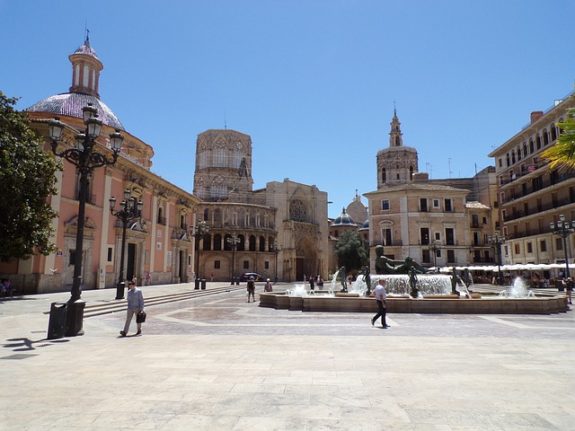During the regional election campaign in Valencia in May, Spain’s right-wing Partido Popular (PP) government campaigned, partly at least, on tax cut commitments.
Now the PP President of the Generalitat, Carlos Mazón, has announced a raft of “tax relief” measures for millions of Valencian residents that focus on rebates for property purchases, dental and optician’s expenses, mental health treatment and sports and exercise costs.
This builds on the PP election pledges, and comes after its abolition of Inheritance and Gift Tax in the region.
Mazón, along with regional Minister of Finance, Ruth Merino, will incorporate the further tax cuts into the region’s 2024 Budget. The relief package is based on two main branches of fiscal reform: firstly, deductions in Income Tax (IRPF as it is known in Spain) and, secondly, by applying a new reduced rate for the Property Transfer Tax.
The regional president has been keen to signal a new direction in tax policy in the Valencian Community. “The change has begun and this change is being carried out,” Mazón said when outlining the new measures to the press. The tax cuts will, according to Generalitat estimates, have a fiscal impact of €200 million.
READ ALSO: Why many people in Alicante feel cheated by the Spanish State
Of the cuts, 180 of the estimated €200 million will come from income tax cuts. For IRPF, the PP led regional government has proposed a series of deductions in seven key areas of income tax for individual declarations of income up to €32,000 and joint income declarations of up to €48,000.
In total, Mazón pointed out that taken along with the abolition of Inheritance and Gift Tax, the regional government has made total tax cuts of €365 million: the almost €200 million in deductions and slashing of property taxes, in addition to the previous €166 million in Inheritance and Gift Tax, a measure yet to be approved by the regional executive.
READ ALSO: EXPLAINED: How to pay less Spanish IBI property tax
“It is aimed at those who need it most, at the lowest income brackets”, Mazón said, pointing out that more than two million taxpayers will be eligible for rebates, “almost nine out of every ten” in his words. It should be noted, however, that these proposals in the draft bill are still subject to debate in the Valencian regional Cortes, and Mazón stressed that they present a “draft bill as a proposal open to dialogue” with proposals that can “enrich the text”.
The deductions will also be applied retroactively from 1 January 2023 for the next income tax return and will be cumulative, that is to say, deductions for sporting activities can be added to those for oral health expenses, for example.
Property tax cuts
A main pillar of the reforms focuses on property taxes, especially for young people, and cuts the property transfer tax (Impuesto de Transmisiones Patrimoniales, ITP).
Mazón has announced a “super-reduced ITP rate” of 6 percent, lowering it from the current 8 percent for all young people under 35 years of age who buy a home of up to €180,000. This measure is expected to benefit some 15,000 young people and have an impact of €14.7 million.
READ ALSO: Where are the best and worst places for inheritance tax in Spain?
“The priority is for those who earn the least, those who are currently under the most tax pressure,” Mazón said, adding that the government hopes that tax cut measures will provide incentives for young people to get on the property ladder. In addition, there is also a reduction on this rate for purchases of a main residence that is social housing when the price of the property is below €180,000.
The super-reduced rate will also apply to large families, women victims of gender violence or people with disabilities wanting to purchase property up to €180,000, who will see their rate reduced from 4 percent to 3 percent on property purchases.
Health deductions
The new rafts of tax cuts also introduce a series of rebates on health expenses.
These deductions will be 30 percent for dental health expenses up to €150, 30 percent up to €100 for optical expenses, 30 percent up to €150 for mental health treatment and support expenses, and 30 percent up to €150 expenses associated with sports.
In the case of sports costs, Mazón gave examples of club and federation fees, expenses and gym membership costs.
This builds on tax deductions of up to €100 for families with someone suffering a chronic illness, which is extended to €150 if it is a large or single-parent family, and deductions of up to €100 for expenses generated by family members with Alzheimer’s disease or brain damage, again extended up to €150 if it is a large or single-parent family.
READ ALSO: Alicante vs Valencia – Which one is better to live in Spain?




 Please whitelist us to continue reading.
Please whitelist us to continue reading.
Member comments